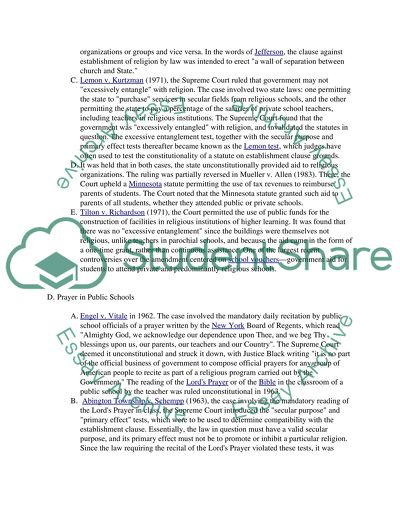Equal Liberty And The Establishment Clause, Then And Now Essay. Retrieved from https://studentshare.org/law/1438763-equal-liberty-and-the-establishment-clause-then
Equal Liberty And The Establishment Clause, Then And Now Essay. https://studentshare.org/law/1438763-equal-liberty-and-the-establishment-clause-then.


